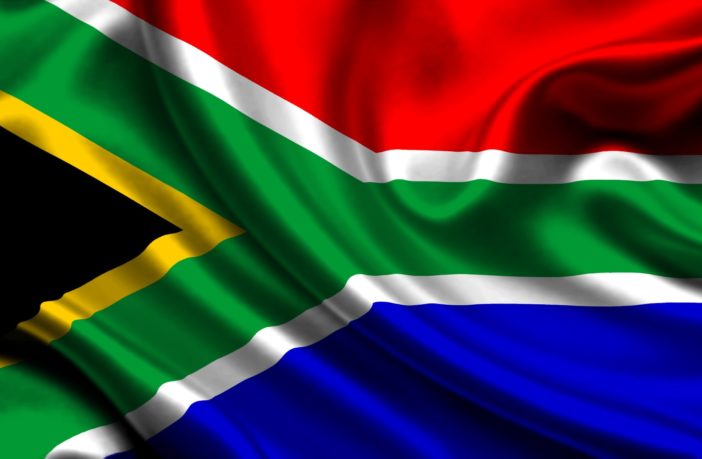Open-Ed
- Over the holiday period, there were several important developments regarding the major issue facing the country: electricity.
By far the most important was the release of the long-term electricity plan, the Integrated Resource Plan 2023 or IRP 23. This is a still a draft. After public comments, it will be gazetted to replace IRP 2019. Even as a draft, it is a wholly unsatisfactory document that lets the country down in a crucial area of development. More about that later.
The government also announced three bid windows for 5 000MW of renewable energy, 2 000MW of gas, with another one for 1 000MW of gas, specifically in Nelson Mandela Bay, to come later in the year as well as 615MW of battery storage.
A request for proposals (not a bid window) for 2 500MW of nuclear power is also envisaged for 2024. A nuclear power station takes 10 to 15 years to develop. This will not make any difference between now and 2030 and we will revert to the issue once the proposals are in and we know what is at stake.
Another important piece of information came from energy analyst, Chris Yelland. Based on Eskom data, he calculates that the utility’s energy availability factor (EAF) declined from 58% in 2022 to 54.7% in 2023. This is a stark summary of the relentless decline at Eskom and makes a mockery of EAF targets of 65% and 70% set at various stages by management and politicians.
IRP 23: Visionless and without urgency
The IRP comes to the bleak conclusion that, even with new capacity (including 3 000MW gas from Eskom), load shedding can be expected to continue into 2027. Publishing a “plan” that includes load shedding for another four years can only be called negligent planning. Common sense dictates that such a plan must set out a path towards plugging the supply deficit and eliminating load shedding.
The prognosis of load shedding continuing until 2027 is premised on a very realistic EAF of 49% to 51%. The only scenario in IRP 23 where load shedding is overcome, is with an EAF of 66% to 69%. Given the trend in Eskom’s EAF, that is clearly wishful thinking.
Relief from load shedding can only come from new investments. This is where IRP 23 really lets the country down.
There is general agreement that South Africa needs 60 000MW of new capacity over 10 years – about 6 000MW per year. The Presidential Climate Commission, for example, recommended 50 000 to 60 000MW of new renewable capacity over 10 years, plus 3 000 to 5 000MW of new gas. But for the seven years to 2030, IRP 23 only provides for a total of 28 000MW to be added, leaving a shortfall of 22 000 to 32 000MW. For a country in an electricity crisis, this is wholly visionless and without urgency.
Inexplicably, IRP 23 does not include the 5 000MW renewables from Bid Window 7, released in December. It also does not include 5 000MW from a future Bid Window 8, which the minister still has authority to issue. That will cut the deficit by 10 000MW.
IRP 23 also states that more solar and wind power from the private sector is expected to be connected after 2027, but does not bring any numbers into the plan. This week, Nersa revealed that, in 2023, nearly 4 500MW new capacity were installed across 392 plants. A log we keep of private projects announced in the media comes to about 11 000 MW to be added in the next three to four years. Incomplete as the log may be, one cannot just ignore the private sector contribution.
IRP 23 – renewables, gas and coal
Of the 28 000MW of new capacity over the next seven years, which the IRP foresees, 69% will be renewables (wind & solar), 21% gas, 5% dispatchable capacity (essentially storage capacity in whatever technology) and 5% coal.
The 5% for coal refers to the last two units at Kusile and Medupi that will come online during the IRP period. Essentially, there is no new coal. Two 750MW coal plants provided for in IRP 2019, which the minister never activated, do not reappear in IRP 23. The IRP notes that the GeoScience Council and World Bank are undertaking a study at a site in Leandra in Mpumalanga to explore clean coal technologies. Should such technologies indeed be developed, coal could feature again in the period after 2030.
Although it is in IRP 23, I excluded from the 21% gas calculation 1 200MW of gas from Karpowership. The day after the IRP was released, Eskom announced that it had cancelled the transmission grid capacity reserved for Karpowership and two other providers as they could not reach financial closure for their projects by 31 December. Hopefully, this is the end of the inappropriate Karpowership deals, even though the IRP draft still includes it.
Another example of reality outstripping the plan is the provision for 3 000MW gas from Eskom. Industry insiders put the cost of that project at R30 billion and more. However, the R254 billion Treasury bailout of Eskom prohibits any further capex, apart from essential maintenance. It also prohibits further debt taken on by Eskom. It is unclear how the drafters of IRP 23 think the Eskom project will materialise.
As the IRP now stands, it is already outdated on this 4 200MW of gas. Presumably, that would be fixed in the final draft.
Missed opportunity to spur re-industrialisation
At 69% of new capacity, renewables dominate the bid windows. Sadly, that is not enough.
Quite apart from the fact that 32 000 more MWs are needed, the miserly allocation for renewables undermines industrial development.
In 2024, for example, IRP 23 envisions only 1 000MW of solar renewables to be installed; in 2026 only 1 040MW; in between, in 2025, there is a spike to 3 000MW. With such a limited and fluctuating uptake, how can industrialisation and localisation of renewable power components take place?
If we play our cards right, green energy can play a huge role in re-industrialising the country. The opportunity is right in front of us, but who will build a factory to produce solar panels or wind components if uptake is going to be so limited and fluctuating? We learnt that lesson when Brian Molefe suspended renewable energy contracts in 2016 and a solar panel factory in KZN had to close down.
Now what?
There is one big difference between IRP 2019 and IRP 2023, and this is the regulatory context. The changes announced by President Ramaphosa in 2021 and 2022 created a liberated electricity market where private players can do their own thing, irrespective of what the minister publishes in an IRP. Over the last two years, we have seen private players, from households to big corporates, using this freedom to create their own supply. Traders and energy exchanges are also emerging to buy and sell power, further expanding supply and consumption.
Over the last year, many companies have started embracing renewable power, partly to beat load shedding, but also to move towards being carbon neutral. Anglo American SA, for example, are aiming for 5 000MW of renewable power by 2030, to be carbon neutral by 2040; 5 000MW is as much as a whole government bid window. Similar stories are unfolding at many other companies.
Even the country’s biggest coal producer, Exxaro, will not invest in more coal assets and are rather hunting for renewable assets. Earth & Wire, a private sector “utility”, has already signed agreements to provide many thousands of MWs to various buyers. The genie has left the bottle.
Reflexivity, the theory that an action carries in it a counteraction, is also at work here. The more IRP 23 states that load shedding will continue to 2027, and the more it works with unrealistic gas assumptions, the more people will note the failures and make their own arrangements.
It would be better if there was one national plan that mobilised the public and private sector to play their respective roles to eliminate load shedding and undertake the long-term development of the energy sector. But IRP 23 is not that.
So, we will have to rely on private sector initiatives to get us over the line. This is happening.
Transmission capacity
The transmission grid is still a concern, but fortunately also a priority, both in terms of money and attention.
National Treasury has signed two agreements with European lenders for concessional loans to be used for transmission expansion. The terms of the government’s bail-out of Eskom for R254 billion are creating a bottleneck now, because of the prohibition on capex programmes mentioned above. That, of course, impacts investment in transmission. The new National Transmission Company, for whom a new board was announced this week, will be fully operational from 1 April, and the European money will probably go to that company to proceed with expanding transmission.
Eskom Transmission currently envisions that 1 675km of new lines will be built by 2027 and 12 500km thereafter. Power Operations & Leadership Association of Southern Africa (Polasa), an industry organisation, has called this a “famine and feast” scenario and argued for some of the projects to be brought forward.
Electricity Minister Kgosientsho Ramokgopa, who was recently given responsibility for the transmission network, acknowledged the problem in his first news conference of the year. He set a goal of building 6 000km over three years and said he had a mandate to look for private capital to co-finance that.
Economic impact
Due to electricity and logistics constraints, 2024 will again be a tough year economically. Nobody is expecting the economy to grow at the population growth rate of 1.8%. This means that 2024 will be the 11th year in which the economy grew more slowly than the population and the country is getting poorer. We already have a decade of declining per-capita incomes behind us.
That, of course, impacts unemployment, poverty, the ability of the government to collect taxes, having sufficient resources for development. It affects everything. Electricity must be resolved, and logistics cleared. Only then can the country again enjoy a rise in per capita incomes.
So what?
The further decline in Eskom’s EAF to less than 55% for 2023 underlines the futility of wishing for higher efficiency numbers to deal with load shedding. It is truly a case of “hope over experience” – particularly with power stations that are getting older with each passing year;
The only sustainable way to energy security is massive investment in new capacity. The country needs between 50 000 and 60 000MW of new capacity by 2032. IRP 23 only envisages 28 000MW and that includes a dubious gas project by Eskom. It leaves a huge supply gap;
Fortunately, regulatory reform since 2021 has opened the way for private sector involvement in electricity. Load shedding, rising tariffs and ESG concerns are spurring that involvement on. This should help to plug the supply deficit;
Getting out of the electricity crisis is a big opportunity for South Africa to stimulate investment, growth, and re-industrialisation. IRP 23 does not seize this opportunity; and
The Just Energy Transition plan is a much better road map for the country’s evolving energy sector. We will monitor how that is implemented.
Author: JP Landman
JP is an independent political and economic analyst. This article was originally written for Nedbank Private Wealth
Disclaimer: The articles and videos expressed in this publication are those of the authors. They do not purport to reflect the opinions or views of Green Building Africa, our staff or our advertisers. The designations employed in this publication and the presentation of material therein do not imply the expression of any opinion whatsoever on the part Green Building Africa concerning the legal status of any country, area or territory or of its authorities.
















